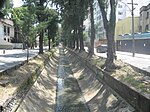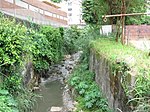Colégio Pedro II is a traditional federal public school, located in the state of Rio de Janeiro, Brazil. It is the third oldest active college in the country, after Ginásio Pernambucano and Atheneu Norte-Riograndense. The school was created in honor of its past patron, the emperor of Brazil, Dom Pedro II.
Founded during the regency of the Marquis of Olinda, Pedro de Araújo Lima, it was part of a larger civilization project of the Brazilian Empire, which included the foundation of the Brazilian Historical and Geographical Institute and the Public Archive of the Empire, its contemporaries. Others, however, point to limitations of this view, suggesting other motivations for the creation of the college, mainly by pointing out that the transformation of the Seminary of São Joaquim into the College of Pedro II was based on the idea of the Reform of the Constitution in 1834, of building a model to be followed, since the provinces were not able to establish their local education system by themselves. Another group of authors, such as Circe Bittencourt, have established views that dialogue both perspectives.
The format of the Colégio explains a lot of the Imperial civilizing plan: an education that prioritized a good education, but that covered a small part of society, which was sufficient to the Empire's project, insofar as it filled the basic cadres of the bureaucratic and ideological system to the country's leaders, with a curriculum that served these interests, not being so concerned with the formation of a broad mass of minimally trained workers, as would occur at later times in Brazil and already occurred in some places in Europe.
It has 12 campuses in Rio de Janeiro, in the neighborhoods of Centro, São Cristóvão (3 units), Humaitá (2 units), Tijuca (2 units), Engenho Novo (2 units) and Realengo (2 units). It also has a campus in Niterói and another in Duque de Caxias.










